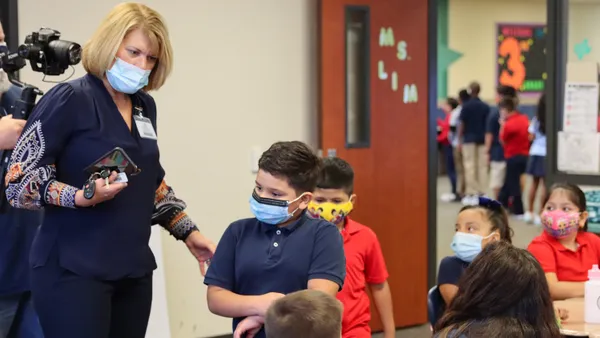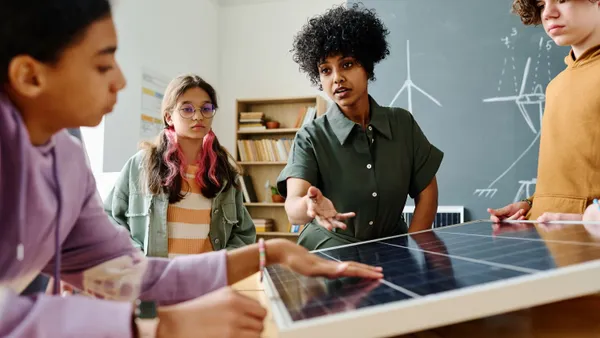The Research and Design Center at Beaver Country Day School, just outside of Boston, is being framed as a Library 2.0. As construction workers focused on the physical space outside, a group of teacher leaders grappled indoors with the concept of unlearning. The school is embarking on a one-year quest to rethink teaching and learning strategies in advance of the opening of the “RaD.”
This year, Head of School Peter Hutton expects this small group of teachers will pilot nonlinear projects that broach unlearning challenges. Their experiences will encourage other teachers to do the same, and then by the opening of the RaD, the shift will reach the entire school.
“Every kid will have some exposure with a new kind of approach to research in sixth grade through 12th grade,” Hutton said.
The Research and Design Center will have three floors with 10 new classrooms, research and collaboration workspace, and an engineering workshop. It will open in the fall of 2017. In the name of planning ahead, Marga Biller, senior project manager at Harvard University’s Learning Innovations Laboratory and a trustee at Beaver, led teachers and administrators in the first steps of their unlearning journey this week. She started with the basics – like what, exactly, is unlearning?
As it turns out, researchers were exploring unlearning concepts in the 1980s, but Biller says that died out. About three years ago, the Innovations Lab picked up the trail, encouraging educators to think about unlearning from three angles: mindsets, habits, and systems.
At its most basic, Biller explained unlearning as the process of learning to think, behave or perceive in a new way when there are already beliefs, behaviors or assumptions in place that threaten such progress. These can be at the individual, group or organizational level.
Mindsets can get in the way when theories about the “right” way to do something prevent a person from seeing alternatives. Attitudes, belief systems, and levels of trust all factor into mindsets that could threaten unlearning, Biller said. Changing mindsets, in that case, is a critical step in achieving unlearning goals. The same is true for habits, or ingrained routines, that get in the way as well as systemic policies, organizational routines, and structures.
At the individual level, when a person’s identity is tied up in one definition or role, being asked to abandon it can be a non-starter. Biller says thinking about identity is an important step. Administrators, for example, will have to consider the threats of unlearning to teachers’ identities as they move forward with systemic change.
“If you ask me why change efforts fail, I would say this is one of the top reasons,” Biller said. “Because we don’t spend the time thinking about it.”
Unlearning is already happening in schools in some ways. One teacher at Beaver pointed out the ongoing efforts among staff members to unlearn racial stereotypes and biases when they enter the classroom. Similarly the growth mindset, which some educators have embraced as the proper way to approach student learning, depends on checking personal biases – or unlearning them.
With the Research and Design Center, students will be taught that failure is acceptable. They’ll have to unlearn a drive to get things right the first time to embrace experimentation. And as they experiment, they may learn that trying harder isn’t going to help. They’ll have to unlearn that age-old piece of advice, too, and open their minds to trying something entirely new instead of doubling down on a misguided strategy.
All of this may take longer and require a shift in the way teachers measure outcomes, which, in turn will require a shift in the way parents do the same. That’s part of the conversation Hutton and part of his staff started having this week, but they know this is only the beginning.
Christopher Dede is the Timothy E. Wirth Professor in Learning Technologies, Technology, Innovation, and Education Program at Harvard and another member of the Beaver board of trustees. He stressed the challenge in redefining the sought-after product of learning.
“For parents, it’s so easy to let the product become the product,” Dede said. “As the teacher, it’s so challenging sometimes to help people see that the process is the product even though it’s a lot less tangible. That’s one of the traps for something like the RaD that we really have to think about.”






 Dive Awards
Dive Awards







